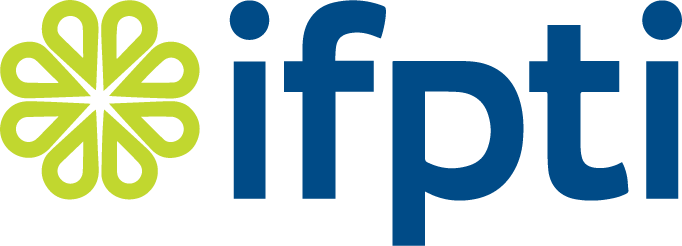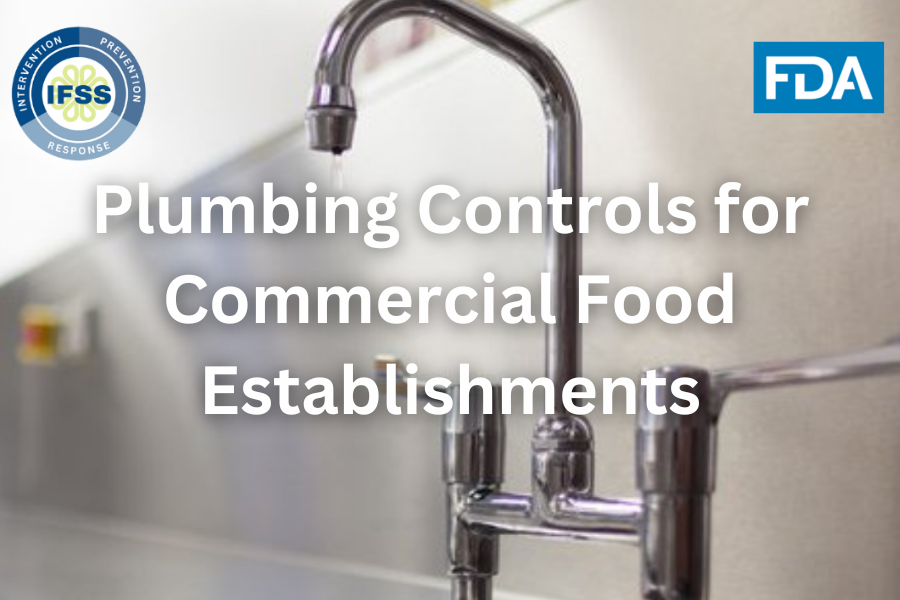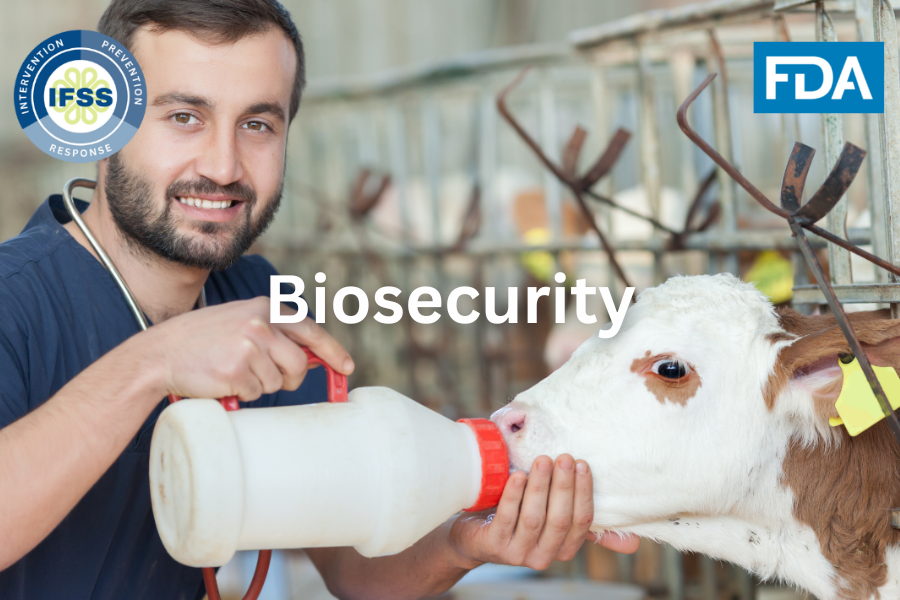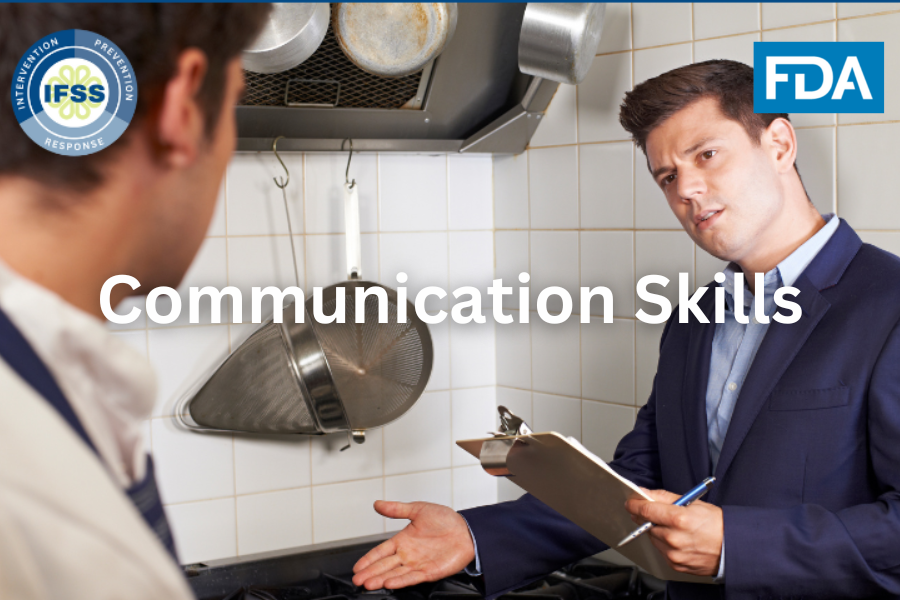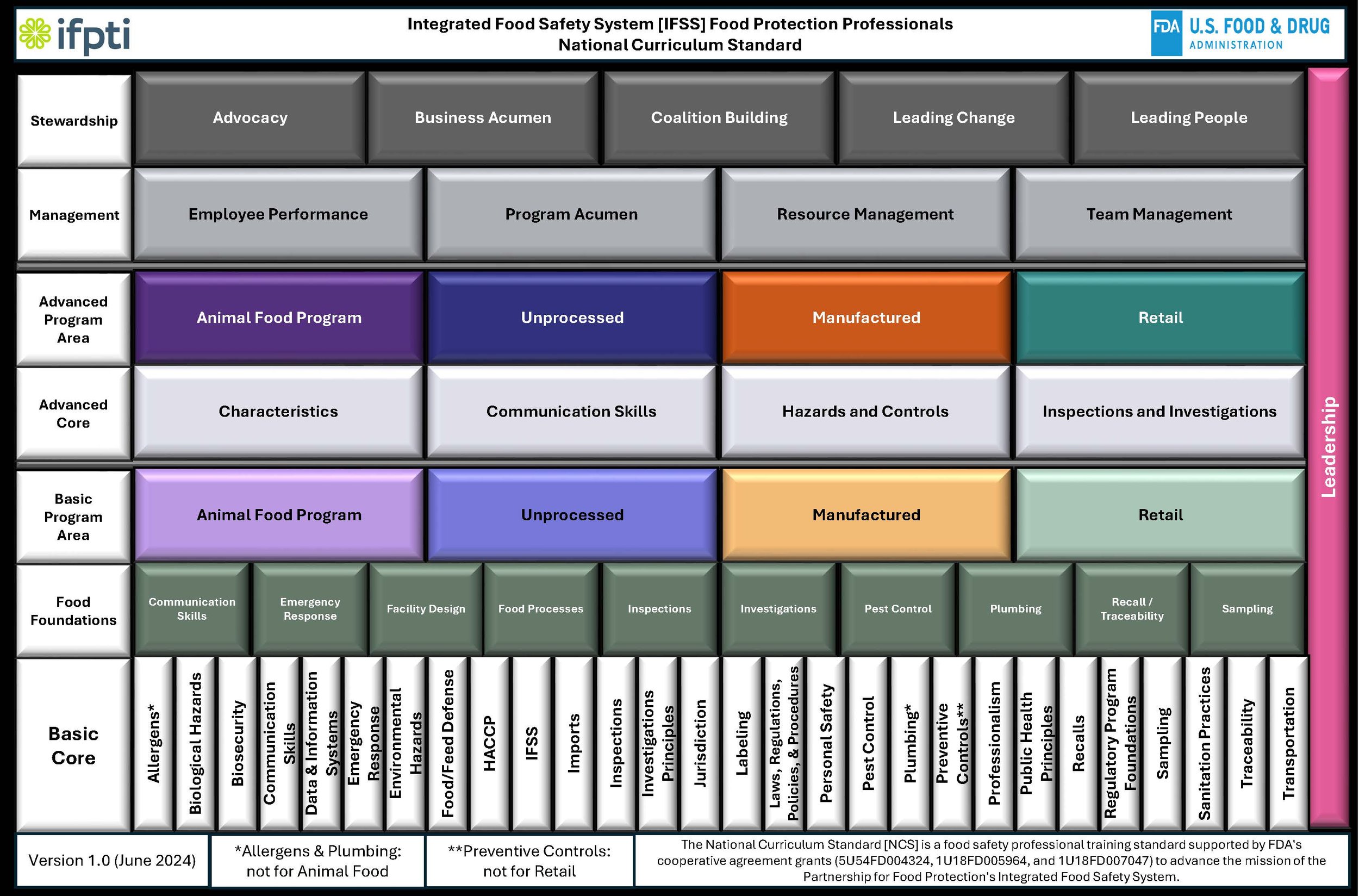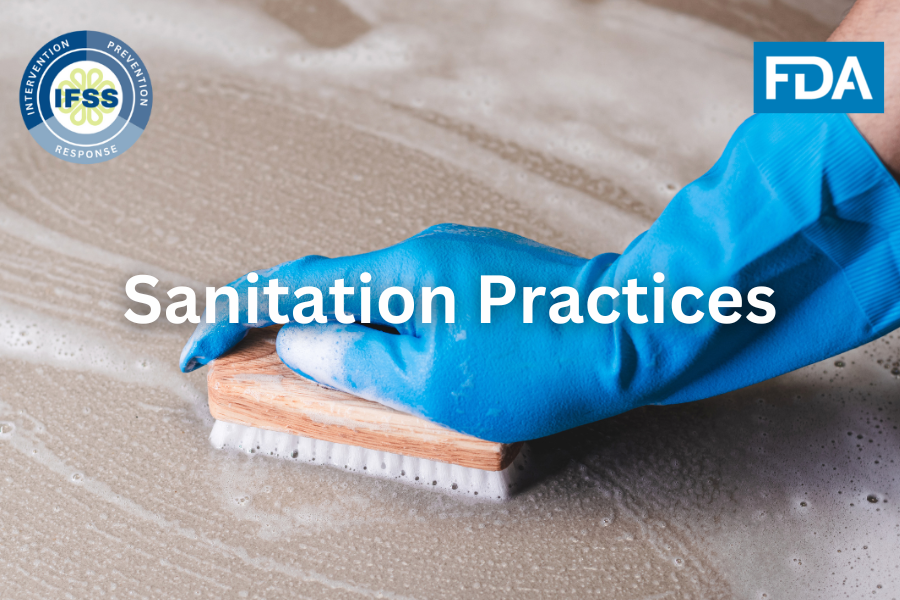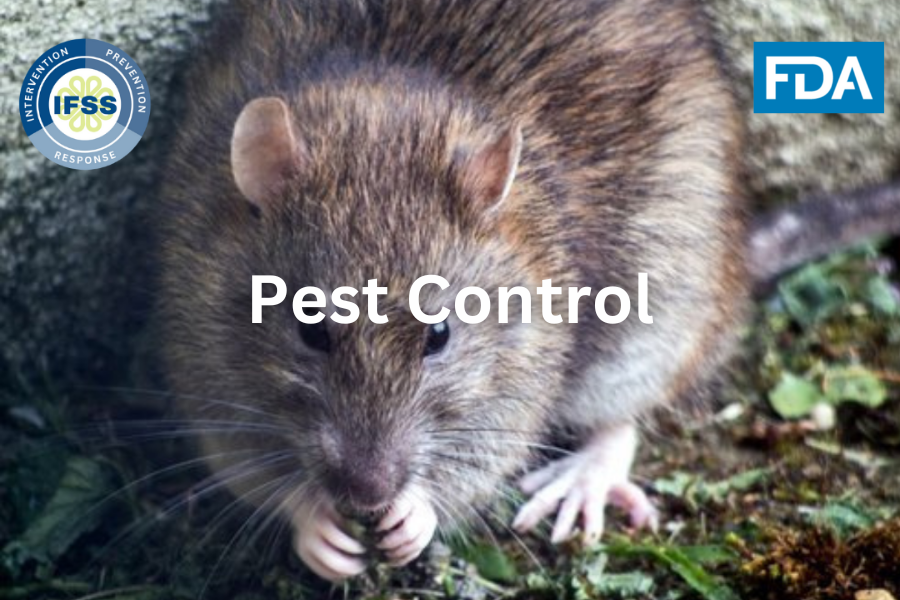 Image 1 of 2
Image 1 of 2

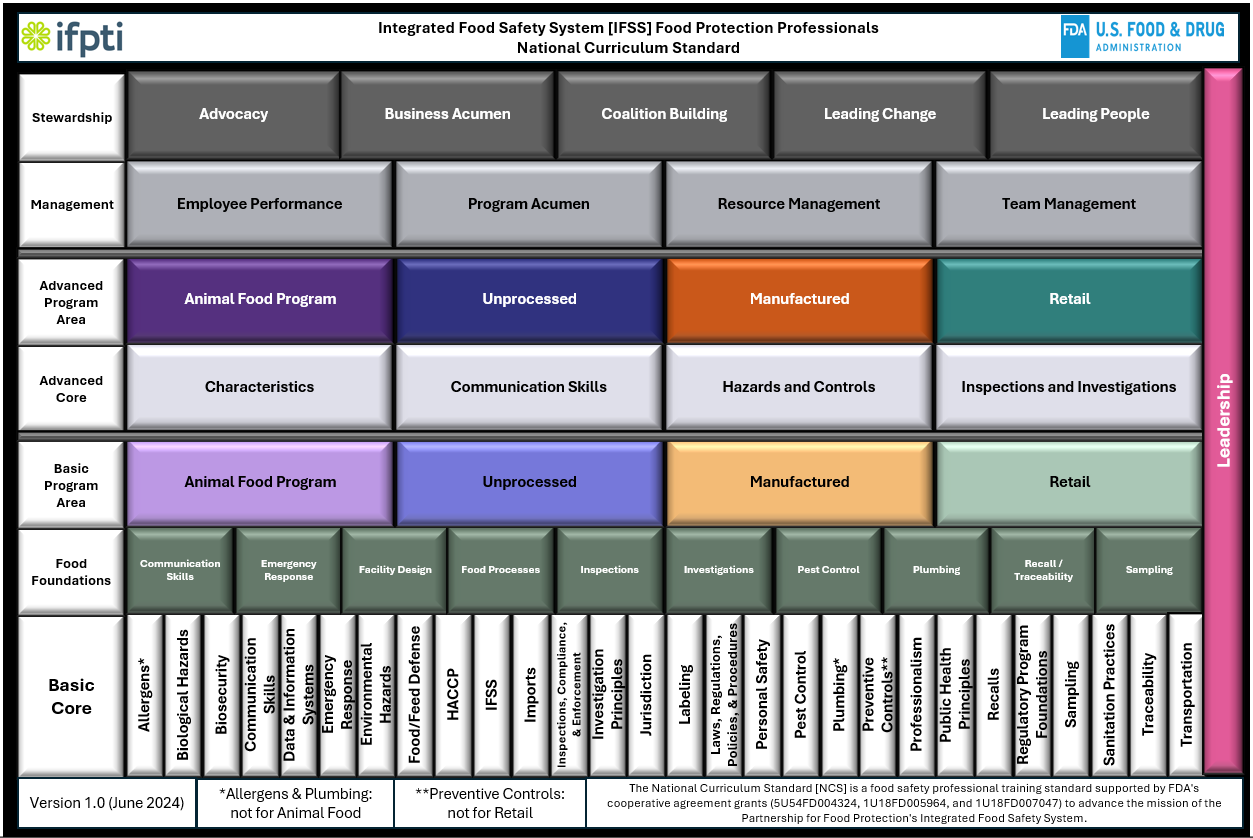 Image 2 of 2
Image 2 of 2



Pest Control
This IFSS Basic Level Pest Control course provides introductory knowledge, skills, and abilities related the management of pests that can be perceived to be detrimental to the production of safe human food and food for animals.
Goal: Explain how pest activity can impact food safety.
Scope: Covered by competencies/learning objectives listed.
Course Objectives
Explain how pest activity can impact food safety.
1a: Describe integrated pest management.
1b: Describe a pest infestation.
1c: Recognize when to take regulatory action.
1d: Discuss agency options for dealing with pest issues.
1e: Describe pest control measures.
2: Discuss the importance of facility design for pest control.
2a: Give examples of pest exclusion in facility design.
2b: Discuss how plant and grounds maintenance will reduce harborage areas.
2c: Discuss the importance of pesticide storage areas.
2d: Discuss how pest control station layout would be used in a facility to control pests.
3: Describe sanitation practices for pest control.
3a: Recognize regulations associated with pest management (GMPS, GAPs, GRPs).
3b: Discuss sanitation measures to prevent adulteration from pests.
3c: Describe measures to eliminate sources that attract pests.
3d: Identify approved chemicals for pest control.
3e: Discuss importance of pesticide chemical labeling.
3f: Discuss importance of pesticide chemical storage.
3g: Recognize defect action level list.
4: Discuss detection of pests.
4a: Recognize evidence of presence of pests.
4b: Determine what equipment is needed for detection of pests.
4c: Discuss agency procedures for pest infestation.
5: Discuss how pest management is used to control pests.
5a: Discuss the importance of pest control.
5b: Describe a pest control plan.
5c: Discuss pesticides.
5d: Discuss an integrated pest management system.
6: Discuss resources and references related to pest control.
6a: Describe resources.
6b: Locate resources.
6c: Select resources.
Contact Hours:
Unit 1 Foundations – 40 minutes
Unit 2 Facility Design – 23 minutes
Unit 3 Sanitation Program – 25 minutes
Unit 4 Detection – 28 minutes
Unit 5 Integrated Pest Management – 20 minutes
Unit 6 Resources – 10 minutes
This IFSS Basic Level Pest Control course provides introductory knowledge, skills, and abilities related the management of pests that can be perceived to be detrimental to the production of safe human food and food for animals.
Goal: Explain how pest activity can impact food safety.
Scope: Covered by competencies/learning objectives listed.
Course Objectives
Explain how pest activity can impact food safety.
1a: Describe integrated pest management.
1b: Describe a pest infestation.
1c: Recognize when to take regulatory action.
1d: Discuss agency options for dealing with pest issues.
1e: Describe pest control measures.
2: Discuss the importance of facility design for pest control.
2a: Give examples of pest exclusion in facility design.
2b: Discuss how plant and grounds maintenance will reduce harborage areas.
2c: Discuss the importance of pesticide storage areas.
2d: Discuss how pest control station layout would be used in a facility to control pests.
3: Describe sanitation practices for pest control.
3a: Recognize regulations associated with pest management (GMPS, GAPs, GRPs).
3b: Discuss sanitation measures to prevent adulteration from pests.
3c: Describe measures to eliminate sources that attract pests.
3d: Identify approved chemicals for pest control.
3e: Discuss importance of pesticide chemical labeling.
3f: Discuss importance of pesticide chemical storage.
3g: Recognize defect action level list.
4: Discuss detection of pests.
4a: Recognize evidence of presence of pests.
4b: Determine what equipment is needed for detection of pests.
4c: Discuss agency procedures for pest infestation.
5: Discuss how pest management is used to control pests.
5a: Discuss the importance of pest control.
5b: Describe a pest control plan.
5c: Discuss pesticides.
5d: Discuss an integrated pest management system.
6: Discuss resources and references related to pest control.
6a: Describe resources.
6b: Locate resources.
6c: Select resources.
Contact Hours:
Unit 1 Foundations – 40 minutes
Unit 2 Facility Design – 23 minutes
Unit 3 Sanitation Program – 25 minutes
Unit 4 Detection – 28 minutes
Unit 5 Integrated Pest Management – 20 minutes
Unit 6 Resources – 10 minutes
